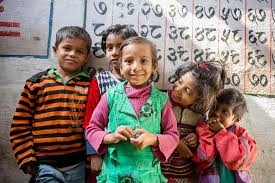Child trafficking is one of the most harrowing and disturbing crimes affecting children around the world. It involves the illegal trade of children for exploitation purposes, including forced labor, sexual exploitation, or use in child soldiering. The global nature of this crime has a devastating impact on the lives of millions of children each year, and it continues to pose a significant challenge to law enforcement, governments, and international organizations.
The Scope of the Problem
Child trafficking is a widespread problem that affects countries across the globe, including both developed and developing nations. According to estimates from organizations like the United Nations and UNICEF, millions of children are trafficked annually. These children are often vulnerable due to poverty, lack of education, displacement due to conflict, or exploitation by traffickers who prey on their vulnerabilities.
The scope of child trafficking extends beyond simple abduction; traffickers use a variety of tactics to gain control over their victims, including manipulation, coercion, and deception. Children may be sold by their own families, abducted in public spaces, or lured with promises of a better life.
The Methods of Trafficking
The methods traffickers use to exploit children are diverse, often involving complex networks of recruiters, smugglers, and other criminal actors. Some of the most common methods include:
-
Abduction: Children are kidnapped from their homes, schools, or public places and forced into trafficking networks.
-
Deception and False Promises: Traffickers often deceive children and their families with promises of education, work opportunities, or a better life in another city or country.
-
Sale by Family Members: In some cases, parents or guardians sell their children to traffickers out of desperation due to poverty or other circumstances.
-
Online Exploitation: With the rise of the internet and social media, traffickers are increasingly using online platforms to lure children into exploitative situations.
Forms of Exploitation
Child trafficking is linked to various forms of exploitation, all of which are devastating to the victims:
-
Sexual Exploitation: Children are often trafficked for sexual purposes, including prostitution, pornography, or forced marriages.
-
Child Labor: Many trafficked children are forced into hard labor in factories, mines, agriculture, or as domestic servants, often in unsafe and degrading conditions.
-
Child Soldiers: In conflict zones, children are trafficked and forced to serve as soldiers, spies, or laborers in armed groups, enduring physical and psychological abuse.
-
Organ Trafficking: In rare but disturbing cases, children are trafficked for the illegal trade of their organs, a heinous form of exploitation.
Causes of Child Trafficking
There are numerous factors that contribute to the perpetuation of child trafficking, including:
-
Poverty: Economic desperation is one of the main driving forces behind child trafficking. In many cases, children are trafficked from poor, rural areas where families struggle to make ends meet.
-
Weak Legal Systems: In countries where laws are weak or enforcement is poor, traffickers operate with little fear of prosecution or punishment.
-
Conflict and Displacement: Armed conflict, natural disasters, and political instability force many families to flee their homes, making them vulnerable to traffickers.
-
Corruption and Lack of Accountability: Corruption within law enforcement and government agencies often allows traffickers to operate with impunity, further enabling the crime.
The Impact on Children
The effects of trafficking on children are both immediate and long-term, leaving deep scars on their physical, mental, and emotional well-being. Victims of trafficking often experience:
-
Physical Abuse: Trafficked children are frequently subjected to physical violence, malnutrition, and neglect.
-
Psychological Trauma: Many children suffer from severe trauma, including post-traumatic stress disorder (PTSD), anxiety, depression, and a deep sense of hopelessness.
-
Loss of Education and Future Opportunities: Trafficked children are often denied access to education, perpetuating cycles of poverty and exploitation.
-
Health Risks: Children who are trafficked for sexual exploitation or forced labor may face severe health consequences, including sexually transmitted infections, malnutrition, and physical injuries.
International Efforts to Combat Child Trafficking
Many organizations, both governmental and non-governmental, are working tirelessly to combat child trafficking on a global scale. Some of the most notable efforts include:
-
United Nations Protocol to Prevent, Suppress, and Punish Trafficking in Persons, Especially Women and Children: Adopted in 2000, this protocol aims to combat human trafficking through international cooperation and legal frameworks.
-
UNICEF's Efforts: UNICEF has been at the forefront of the fight against child trafficking, providing support for prevention programs, advocating for stronger laws, and assisting survivors in their recovery.
-
National Anti-Trafficking Laws: Many countries have enacted and strengthened laws aimed at preventing child trafficking, prosecuting traffickers, and supporting victims.
-
Public Awareness Campaigns: Raising awareness about the dangers of trafficking and educating both children and adults about how to recognize and avoid exploitation is essential in the fight against this crime.
How to Protect Children
Preventing child trafficking requires a multi-pronged approach, including:
-
Education and Empowerment: Providing education and vocational training to children, especially in vulnerable communities, can help reduce the likelihood of trafficking.
-
Strengthening Legal Protections: Governments must implement and enforce strong anti-trafficking laws, providing legal protection and support for victims.
-
Community Engagement: Communities should be educated about the signs of trafficking and encouraged to report suspicious activities to authorities.
-
International Cooperation: Countries must work together to share information, strengthen border security, and combat trafficking networks that cross national borders.
Conclusion
Child trafficking is a grave human rights violation that causes immeasurable harm to children and undermines the well-being of entire societies. Combating this heinous crime requires a unified global response, involving governments, international organizations, non-governmental organizations, and local communities. Only through concerted efforts and sustained commitment can we hope to end child trafficking and give all children the chance to grow up in safety, free from exploitation and harm.


